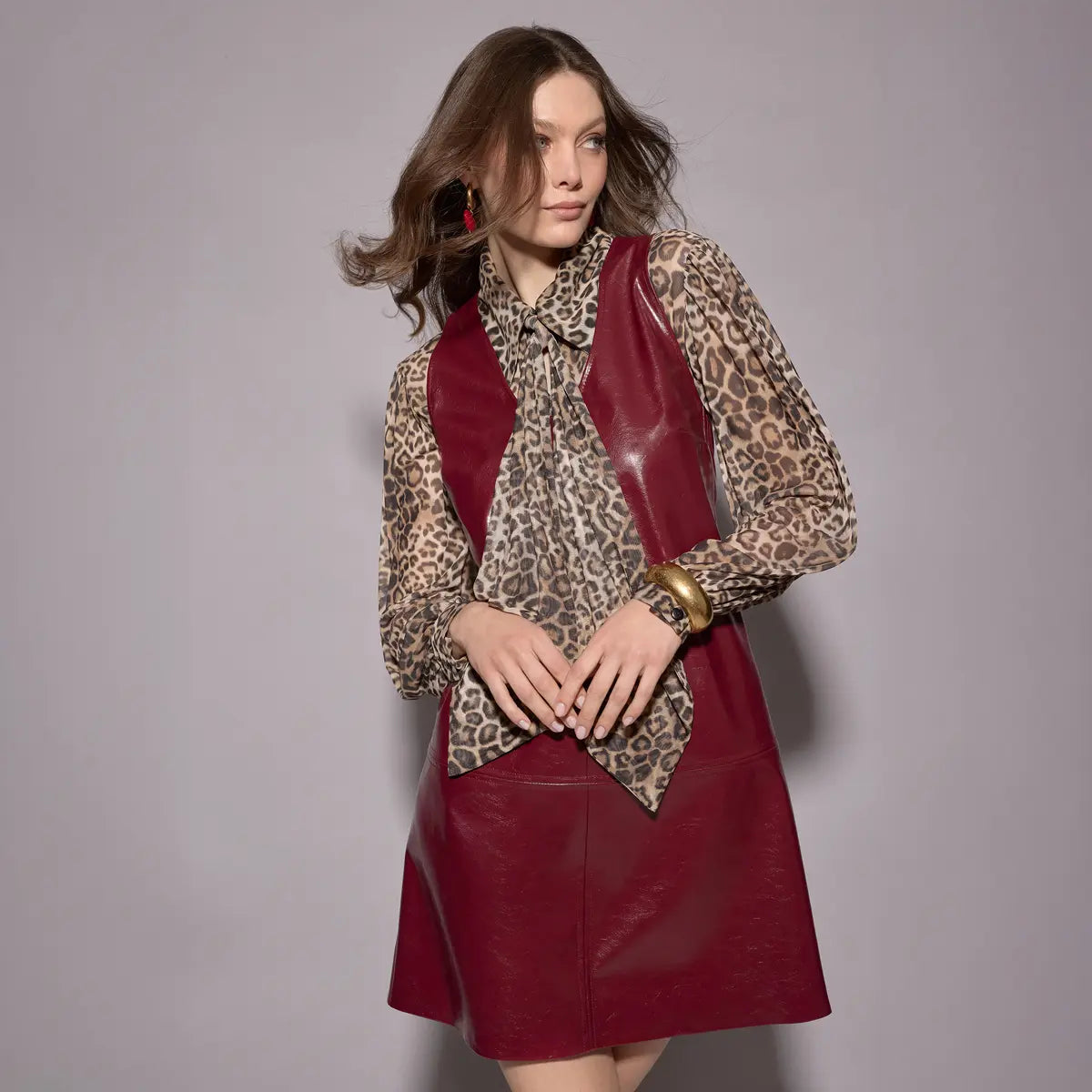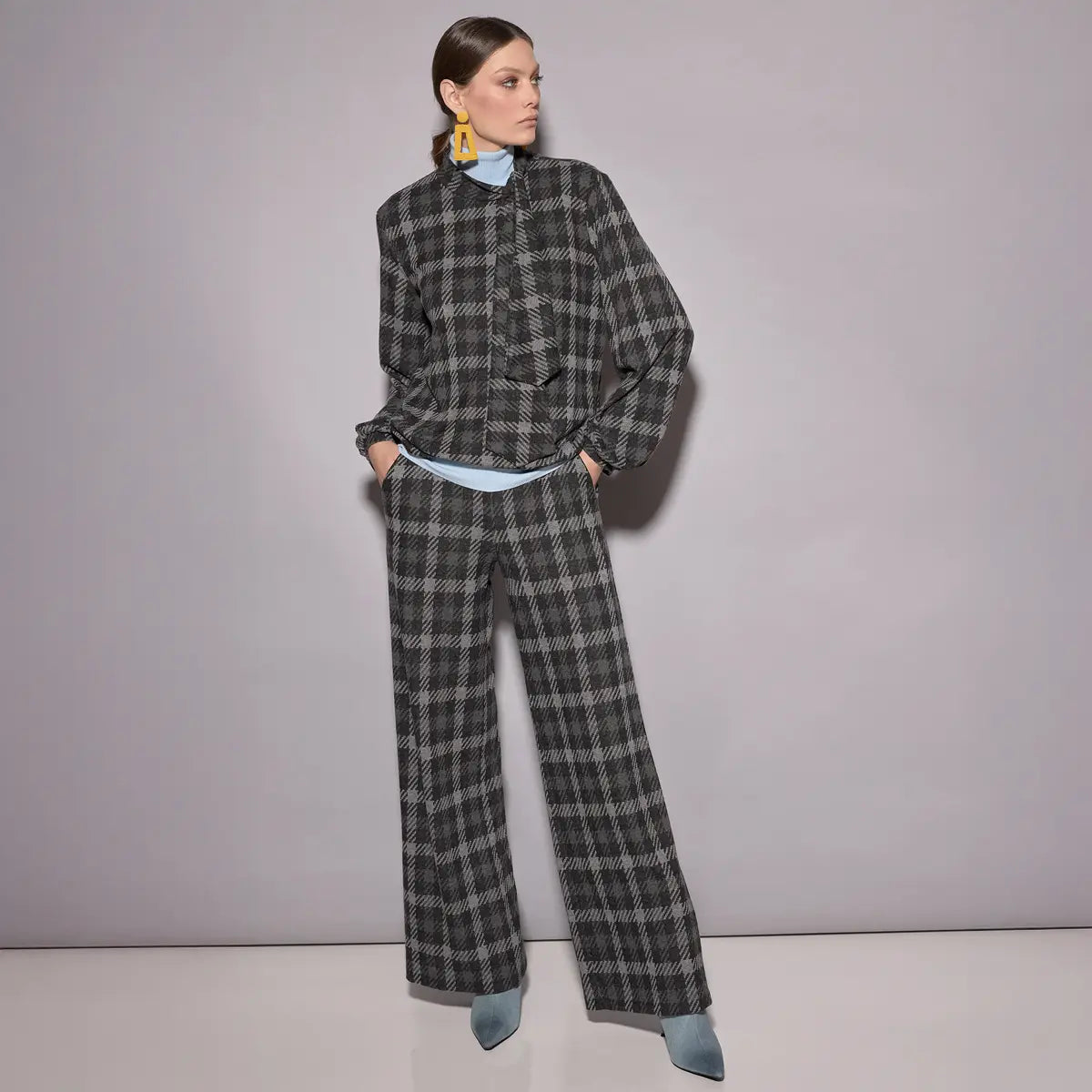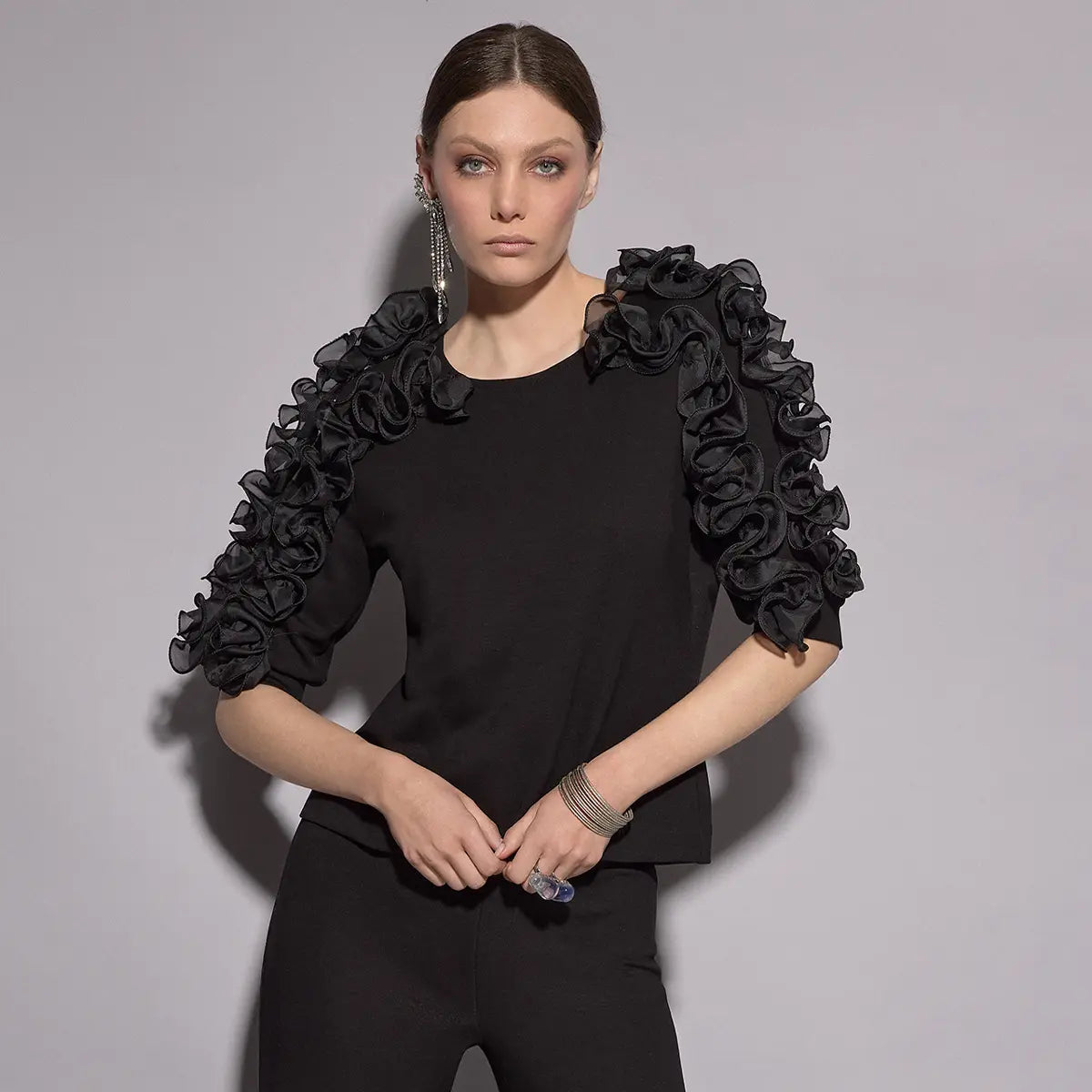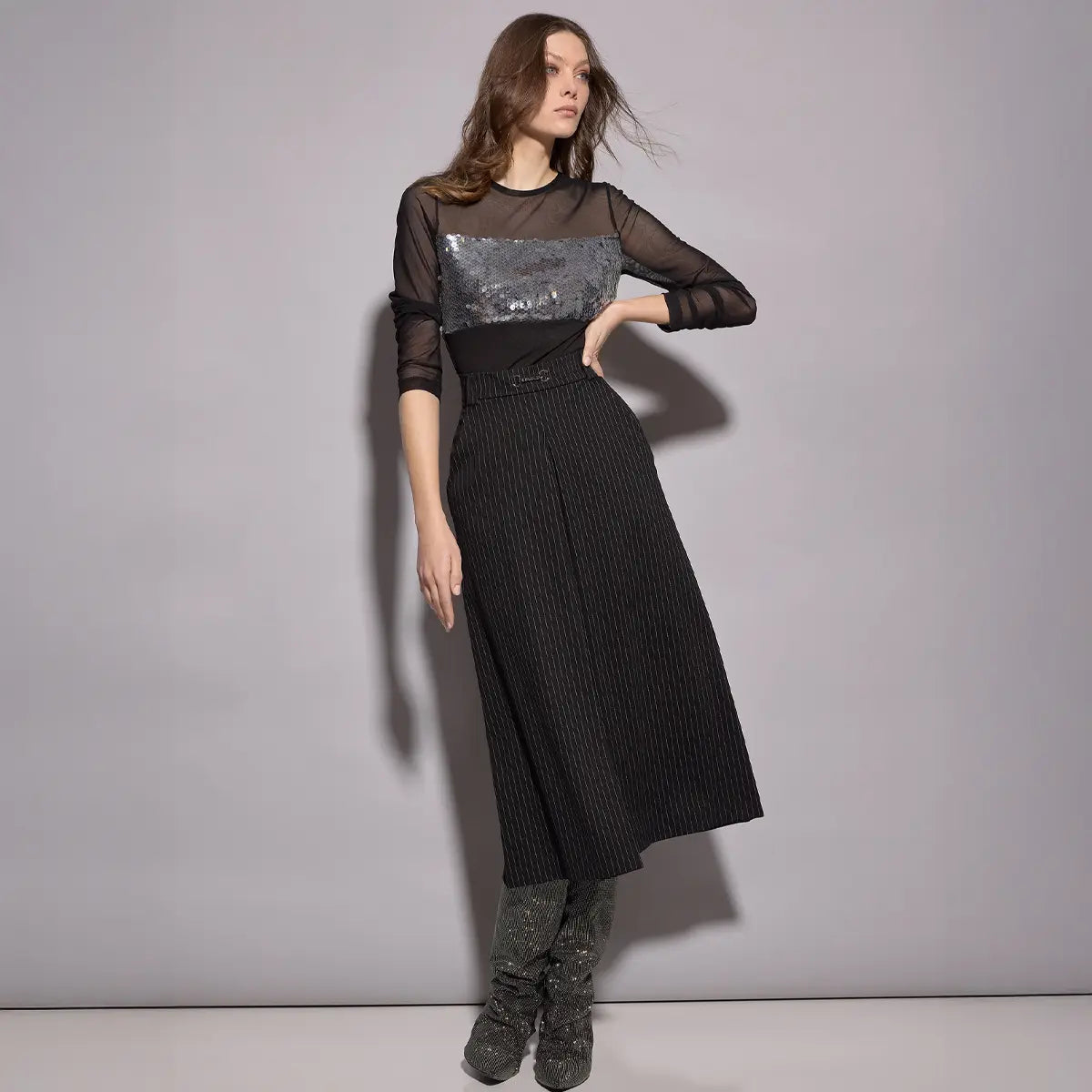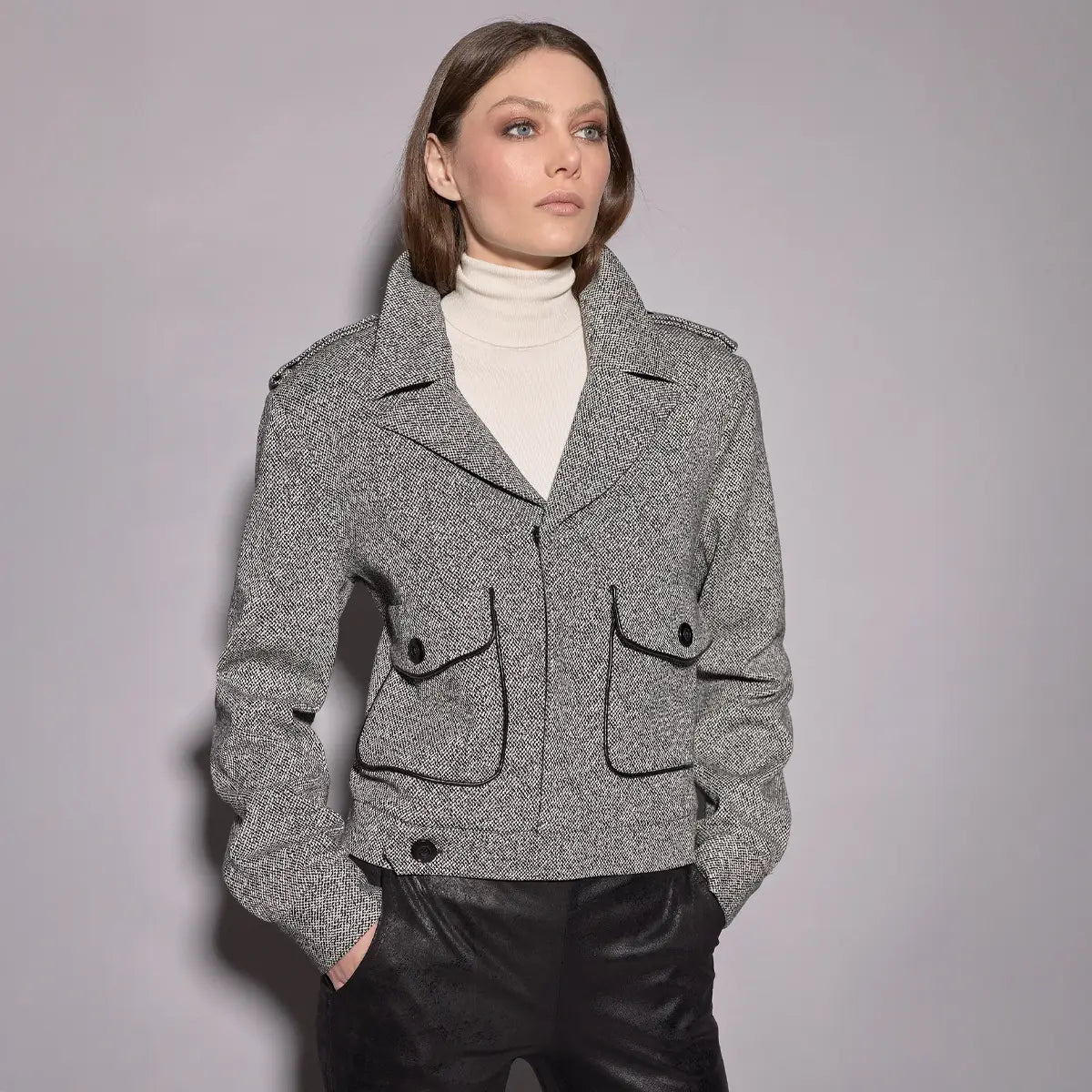Your Complete Sleeve Guide
For everyone who wants to dive deeper into the world of sleeve styles, this guide shows how different sleeve shapes define the character of a garment.

3/4 Sleeve
The mid-length version is a real perennial favourite among sleeve shapes – and for good reason. Usually cut as balloon sleeves, ¾ sleeves end at the middle of the forearm or at the elbow. This shape looks clean and simple, especially on jumpers, shirts or wrap dresses, and makes your arms look beautiful. The popper and yuppie scene of the 80s knew this, even rolling up their jacket sleeves to the elbow.

Balloon Sleeve
The original balloon sleeve is very voluminous: it drapes around the upper arm like a slightly inflated balloon and ends tightly at elbow height. Currently, the modern version is often seen – the cut runs in the opposite direction: tight at the upper arm, the balloon width begins at the elbow and ends at the cuff at the wrist.
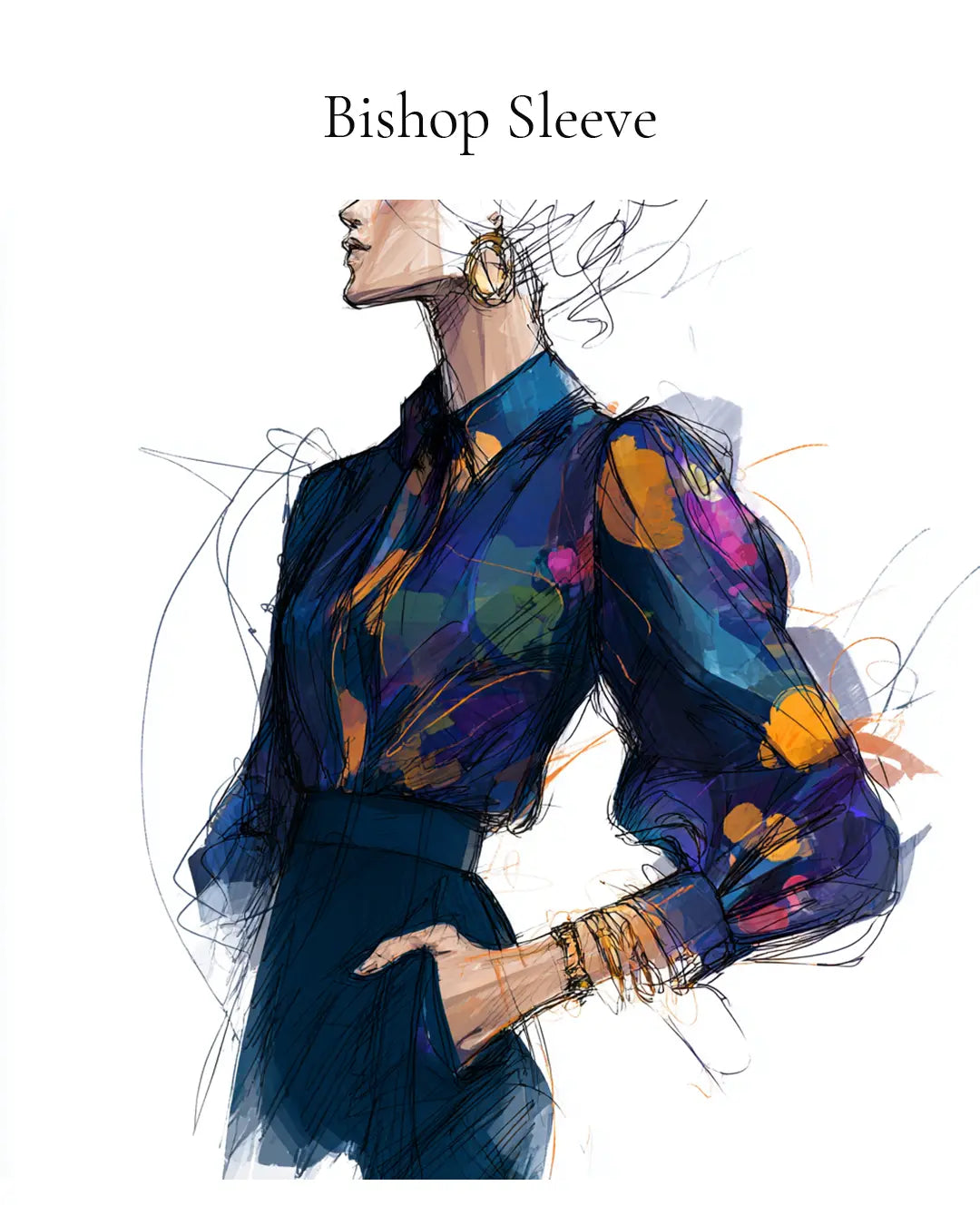
Bishop Sleeve
Bishop sleeves are notable for their wide, loose shape and are gathered tightly at the wrist – often with an (extra-long) cuff or a tight band/elastic so that nothing hangs in the way. The shape of the sleeves is reminiscent of liturgical vestments, hence the name. Often found on formal wear or blouses, they create an elegant, dramatic silhouette.
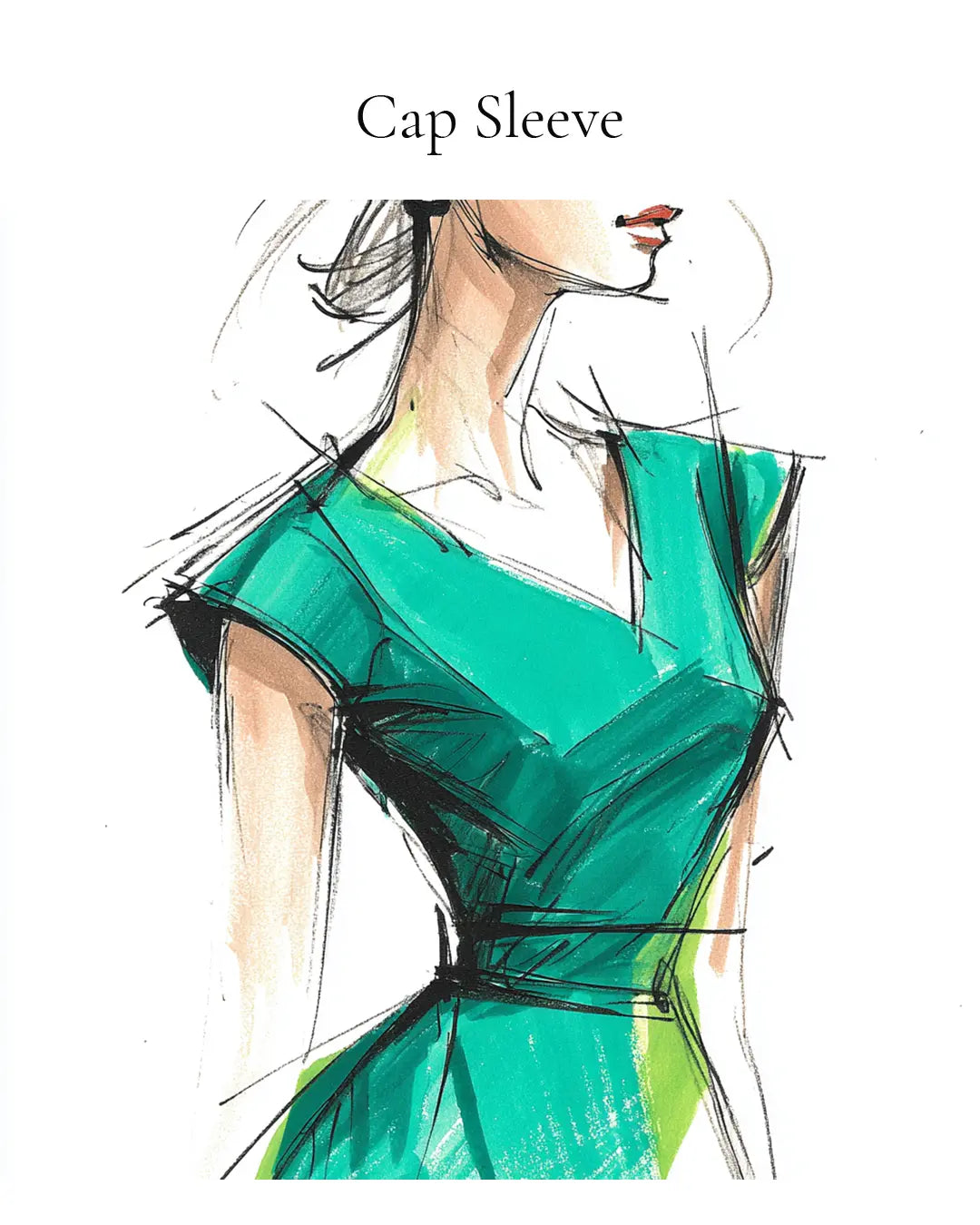
Cap Sleeve
The cap sleeve is a very short style that only covers the shoulders and a small part of the upper arm. It ends just below the shoulder and gives the outfit an elegant, feminine touch. Cap sleeves are popular for summer dresses and airy tops – perfect for warm days thanks to their freedom of movement and ventilation. Lace caps are also a classic in bridal fashion.
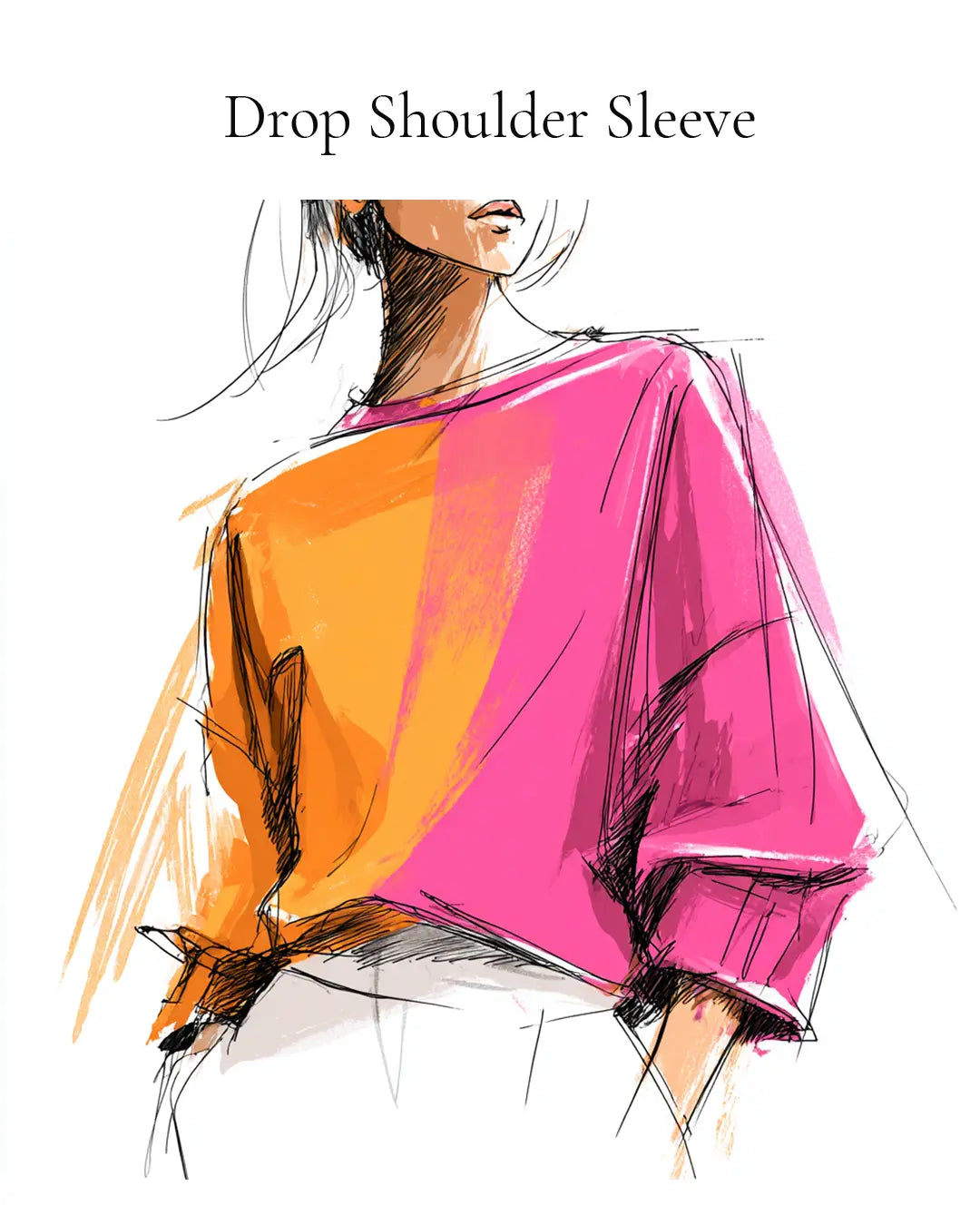
Drop-shoulder Sleeve
Oversized sleeves have been trendy for years – they create soft, rounded, very feminine shoulders and a flowing silhouette (ideal with skinny trousers and skinny jeans). The shape is created when the shoulder seam is extended and the sleeve connects to this extension. Drop-shoulder sleeves are mainly found on cardigans and jumpers, but are increasingly appearing on T-shirts too. In men's fashion, they appear in the casual sector – especially on hoodies, but not in business fashion.

Epaulette Sleeve
Known from the military look, epaulette or box sleeves are real eye-catchers for the shoulders. Classic epaulettes are (often fringed) attachments with badges on uniforms. In fashion, it works in a similar way: a semicircular or angular piece of fabric is placed so that it slightly overlaps the shoulders and makes them appear wider. Classic versions have a boxy, masculine look; more subtle versions can be seen in safari looks. New among fashionistas: removable epaulettes – shoulder brooches made of feathers, rhinestones or sequins, attached magnetically or with a pin – as eye-catchers.

Batwing Sleeve
Batwing sleeves are recognisable by their distinctive shape: they do not connect to the shoulder/armpit seam, but start much further down, at the hem of the jumper or shirt. They become narrower towards the wrist – when you spread your arms, the typical wing shape is created. Already popular in the 80s, they are now cut even wider, especially on cardigans and jumpers. Comfortable, flowing and offering plenty of freedom of movement, they are therefore mainly found in casual wear.
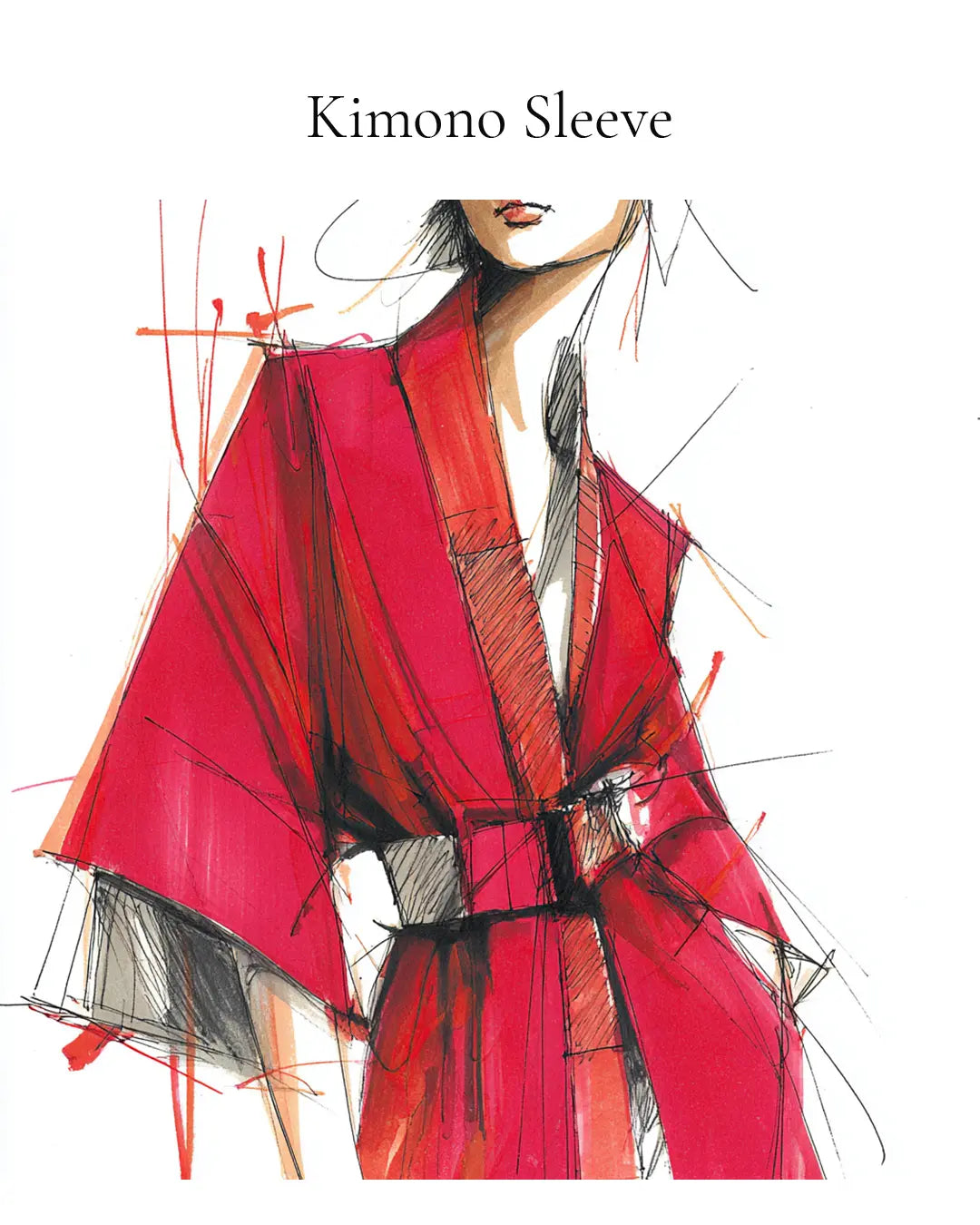
Kimono Sleeve
Inspired by traditional Japanese kimonos, these sleeves are wide and straight cut; they are often made in one piece with the top – without separate shoulder seams. The very wide sleeves (sometimes up to 20 cm in diameter) look elegant and graceful, but can be impractical in everyday life (keyword: washing your hands). That's why modern kimono sleeves are often ¾ length and don't reach the wrist.
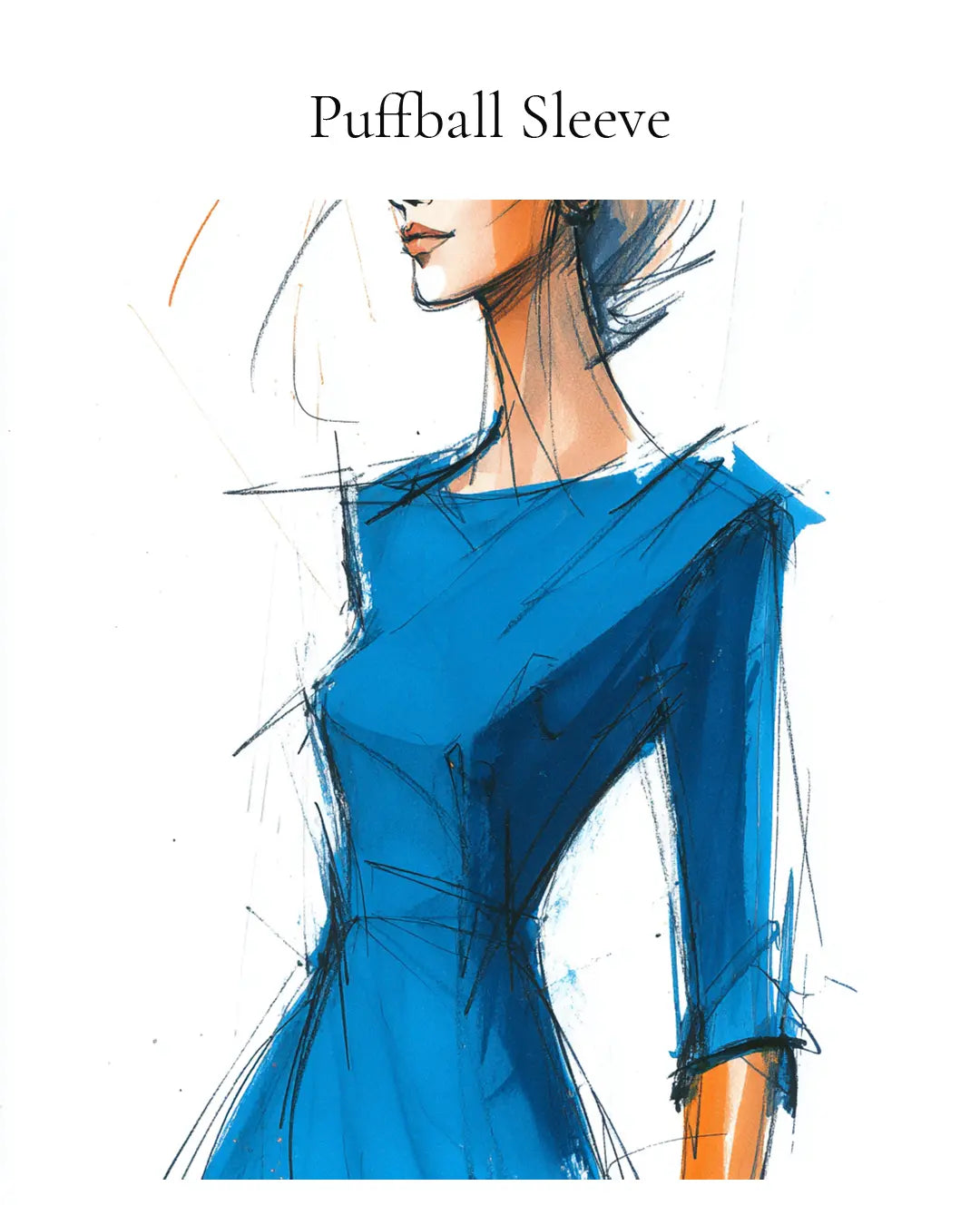
Puffball Sleeve
Contrary to their name, puffball sleeves are not spherical, but close tightly and tubularly at the shoulder seam. The common shape tapers slightly from the upper arm to the wrist and offers freedom of movement without being too voluminous. It is the most common and simplest sleeve variant, e.g. on jumpers, long-sleeved tops and jackets.
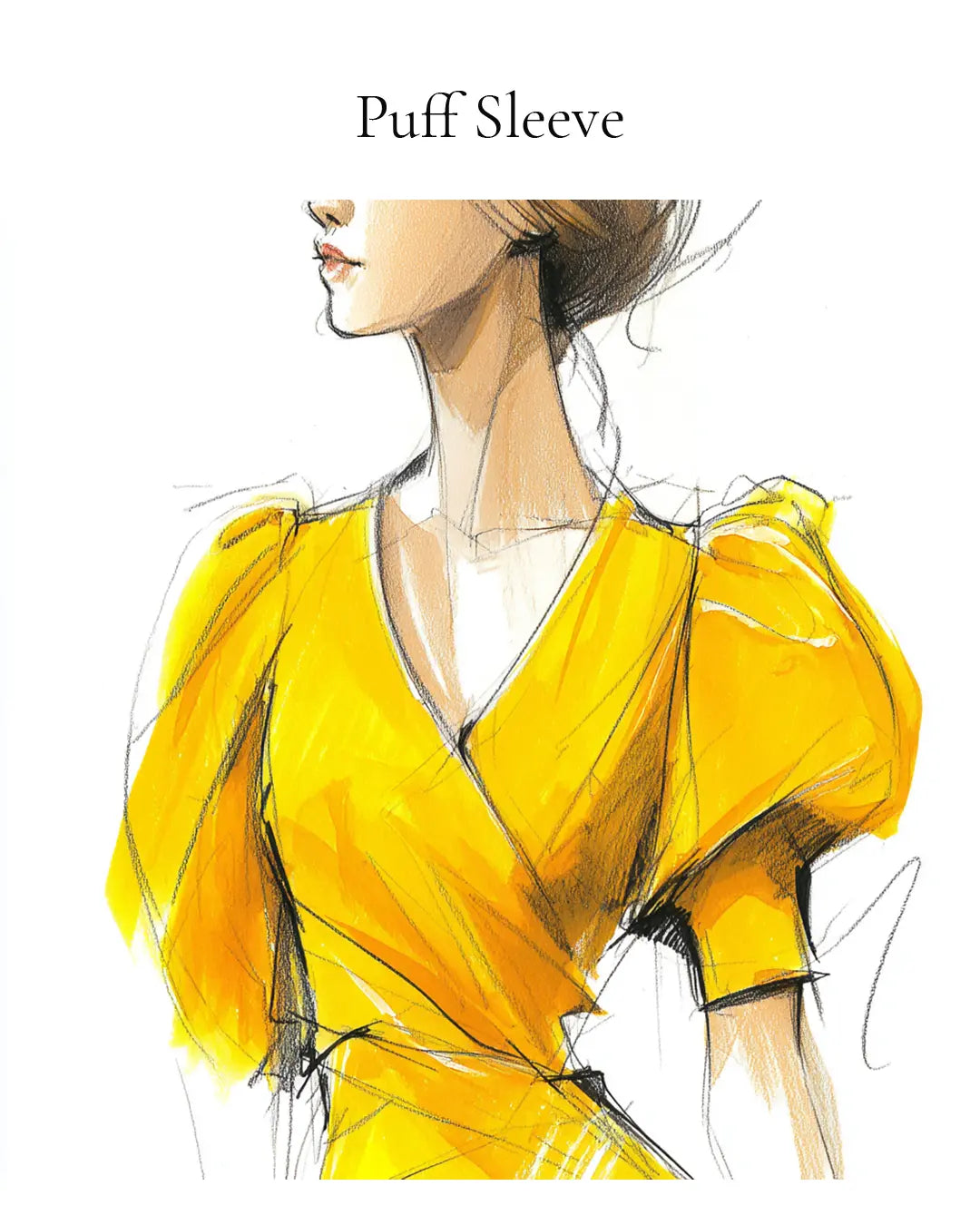
Puff Sleeve
Puff sleeves are playful and very feminine – familiar from historical films such as Gone with the Wind. After their initial heyday in the Renaissance, they made a big comeback in the mid-19th century. Puff sleeves strongly emphasise the shoulders and give outfits a romantic touch. They are still common on dirndl blouses; on the big fashion runways, the next big revival is still in the making.

Raglan Sleeve
Named after Lord Raglan (1788–1855), who lost an arm in the Battle of Waterloo and needed a coat with sleeves attached directly to the collar instead of the shoulder. Raglan sleeves became fashionable in the 1940s and 1950s, especially in children's and sportswear (baseball shirts); the cut was often emphasised by contrasting coloured sleeves. Today, they are a classic, mostly found on shirts and long-sleeved tops in athleisure style.

Butterfly Sleeve
The little sister of flounce and trumpet sleeves: this playful shape is usually short or mid-length and characterised by short flounces at the shoulder. Butterfly sleeves can cover only the upper shoulder area or extend to the elbow as ¾-length sleeves. During the romantic Art Nouveau era, they were very popular on flowing dresses.
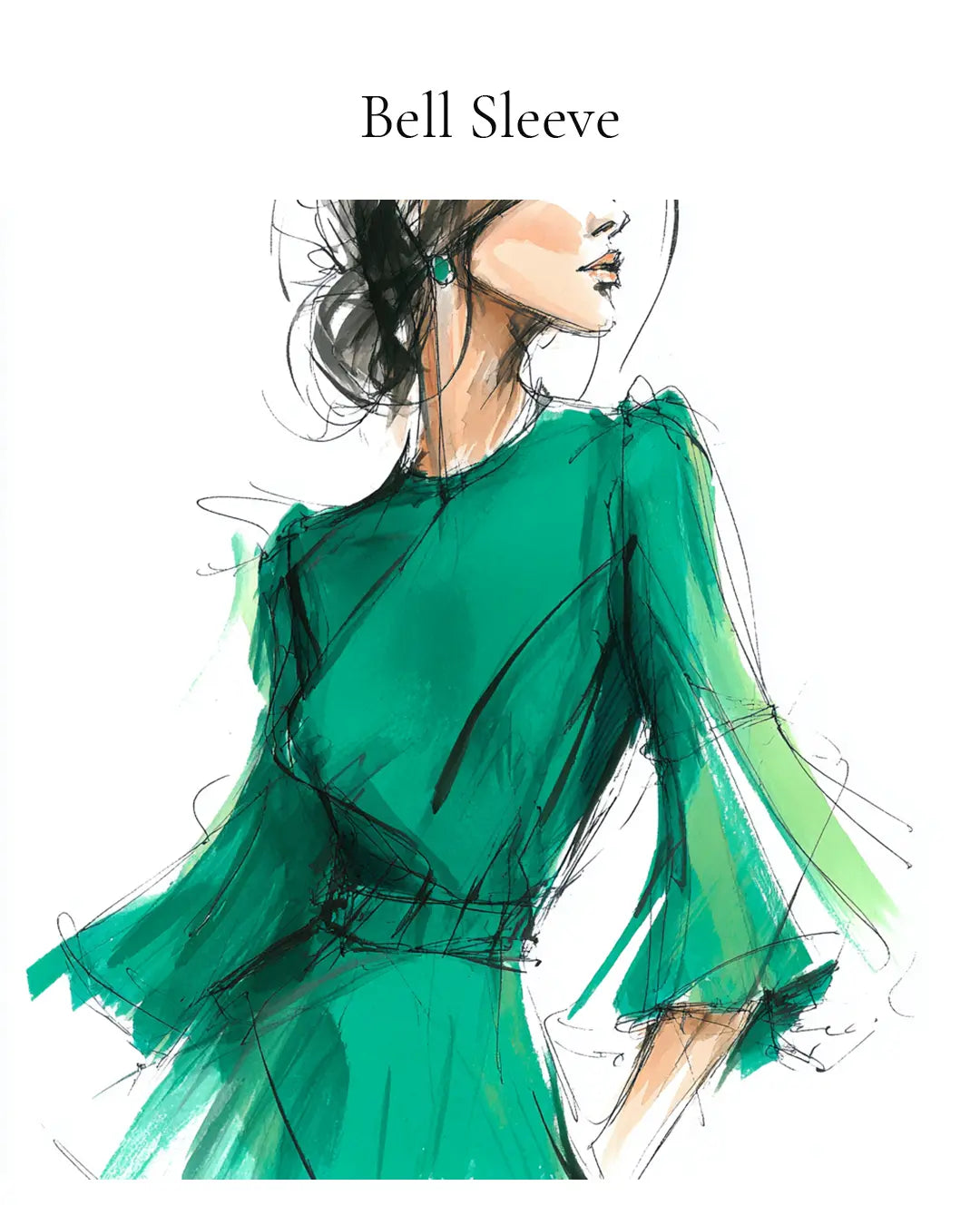
Trumpet Sleeve
Currently often seen on blouses and shirts: the sleeve opens from the shoulder to the wrist in a funnel-shaped silhouette. Known from the wild 70s, when it dominated the hippie and disco scene together with flared trousers. Trumpet sleeves look loose and airy, feminine and cheerful – perfect for summer.
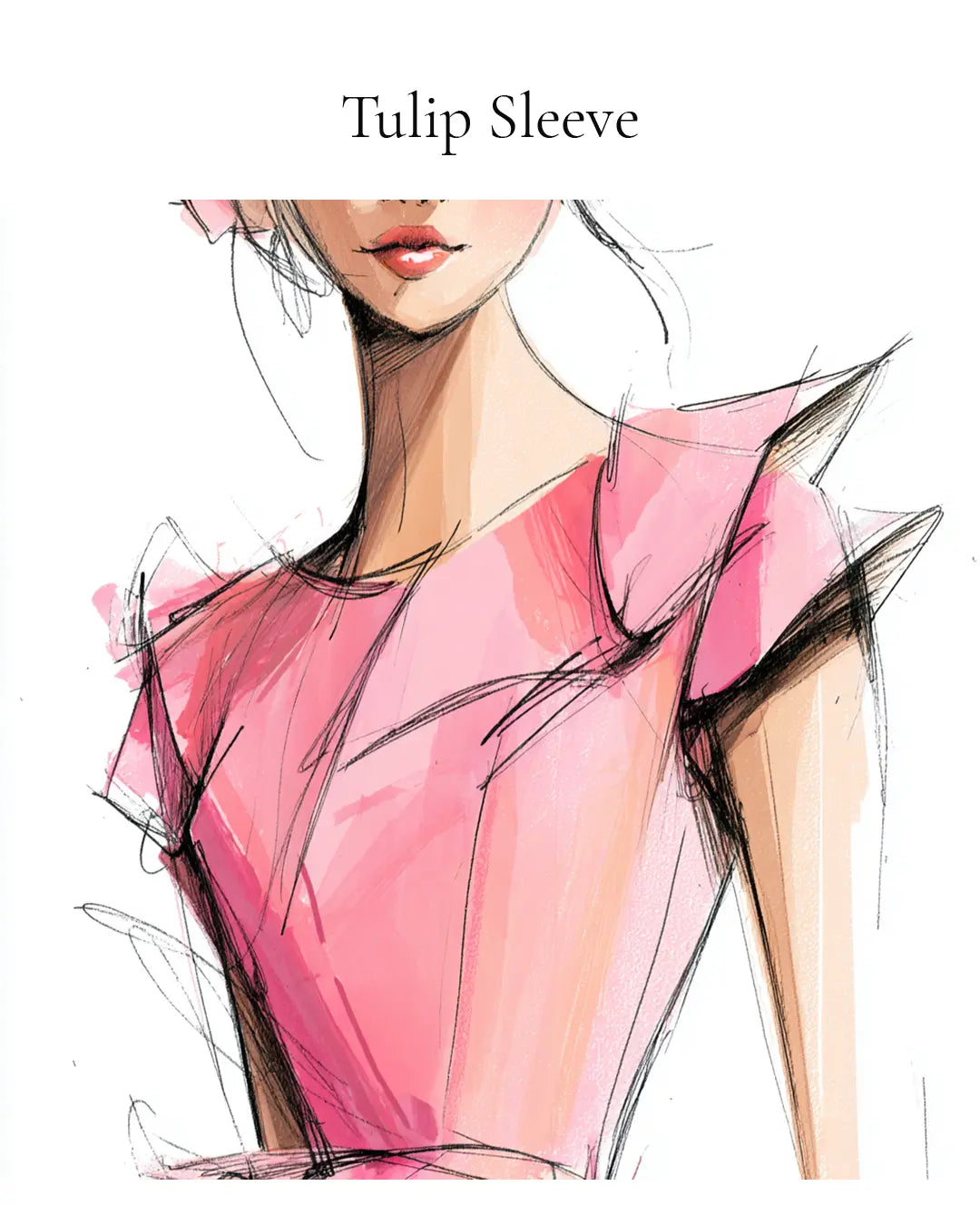
Tulip Sleeve
Tulip sleeves are pretty and practical: round and curved like petals, the short sleeves of a T-shirt or dress overlap each other. This style originated in the late 1940s and is now often seen on shirts – a real eye-catcher, playful and youthful.
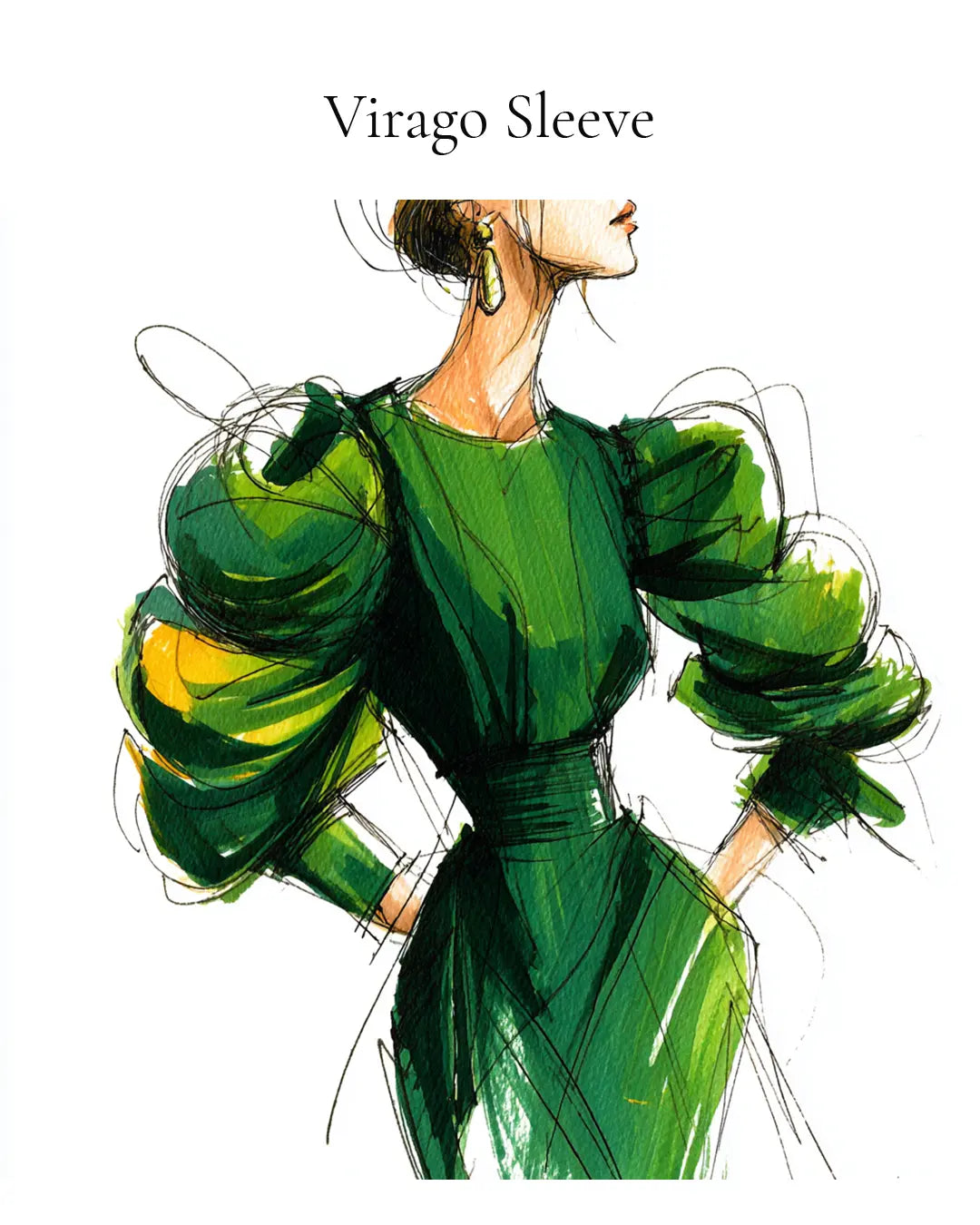
Virago Sleeve
This special variation of the puff sleeve – also known as a Marie sleeve – was all the rage in the 17th century. A long puff sleeve is divided into two or more sections by ribbons and inserts. The arms, shoulders and chest are strongly emphasised, making the waist appear slimmer. The most opulent statement sleeve is currently celebrating a runway comeback.

Flounce Sleeve
Flounce sleeves end in a wide funnel shape, similar to trumpet sleeves. The difference is that the flounce is a separate piece of fabric. It is usually located on the forearm or directly at wrist height; double flounces on the upper arm are also possible. Flounces adorned the robes of the nobility as far back as the Renaissance and have made a comeback time and again since then. Today, they adorn blouses, jumpers and jackets. Modern: vertical flounces from shoulder to cuff (sometimes double) – beware, this variation makes you look wider.
Sleeves that speak
Sleeves are more than just a detail: they shape silhouettes, draw attention and make statements. Whether minimalist ball sleeves for everyday outfits, feminine flounces for movement or striking raglan sleeves for sporty accents – choose carefully what you want to say. This will turn every look into a statement.







